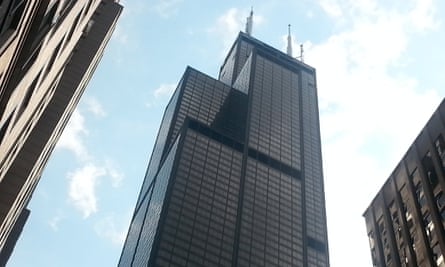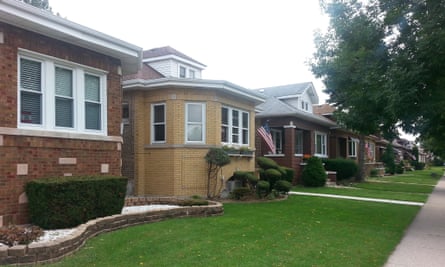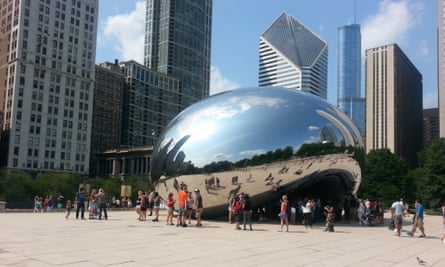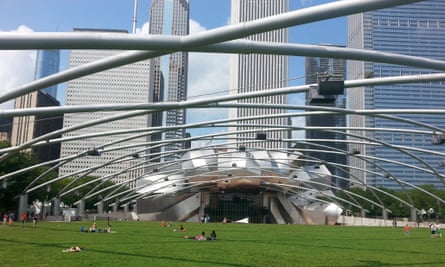I’m an urban planner, presently working as a freelance consultant specialising in community development and neighbourhood planning. A lot of what I do is taking the neighbourhood planning experience I gained in Chicago and applying it to Chicago’s suburbs, where there’s a good deal of demographic transition but not a lot of skill-set locally in managing it. I’ve been privileged to work in the public, private and nonprofit sectors in planning, in big cities, suburbs and small towns, and I think the diversity of my work experience gives me a broader perspective on how cities are constructed and what makes them tick.
I’m also a blogger. I started the Corner Side Yard (a rather archaic zoning term) in February 2012 to rattle off my opinions about cities in the American Midwest, or what many people here call the Rust Belt. Chicago is the premier city in the region, and while I reside here, I write about almost all of them.
Tell us about Chicago

We are a city of 2.7 million people, head of a region of almost 10 million, spread along the southwestern shores of Lake Michigan. We are roughly 1,000 miles from the US East Coast, and 2,000 miles from the West Coast, and the biggest metropolis between them. In my opinion, Chicago is the most American of American cities. Being in the middle of the country, and being the financial and cultural capital of the vast American hinterland, has a lot to do with that.
Chicago is also a bifurcated city. Visitors are well aware of the Loop (downtown Chicago), and the many offerings along our magnificent lakefront. But the city has pockets of entrenched isolation and poverty, a remnant of our highly segregated legacy. That bifurcation is one of the major obstacles to the city’s future.
What’s the best building?

It’s probably cliché to say it, but I think our best building is the Willis Tower, formerly the Sears Tower. At 443 meters (1,454 feet), it was the tallest in the world for decades after its completion in 1974. Unlike many of the sleek, tapered towers of New York, the Willis Tower is a massive, muscular structure that admirably reflects the character of Chicagoans.

Less cliched, however, is the Chicago-style bungalow home. Not any single one, but all of them. There are about 200,000 in the city – out of more than a million dwellings – and they are the quintessential single family housing type in the city. Mostly built between 1910 and 1930, they are an architectural marvel – adaptable, spacious homes designed for comfortable urban living. They are a perfect fit for Chicago’s smallish residential lots.
When coupled with the city’s two-flats, three-flats and gracious U-shaped apartment buildings, they create an incredibly pleasing urban context.
... and the worst?
There are some here who might say that the garish new sign on the Chicago Trump Tower would make it rank high among the city’s worst, but I won’t put it there. In fact, I’m reluctant to single out a particular building as being the worst in the city. However, I will say that there is little that is aesthetically pleasing about the numerous condo and apartment towers that were constructed over the last 10-15 years on Chicago’s north lakefront. Most are monuments to the architects and developers who built them and contribute little to the city’s fabric. In many ways they’re nothing more than billboards.
How clean is your city?
Chicago has a pretty strong national reputation for being a very clean city. Unlike New York – where trash is put on the curb – Chicago is a city of alleys, so trash and debris is placed out of view. Trash is regularly picked up and streets are regularly swept. Strangely enough, this is probably a leftover from Chicago’s patronage hiring legacy. Chicago is well known for having a great deal of corruption within its political machine, going back nearly 100 years. The political system hired as many workers as it could and placed them in street cleaning and sanitation jobs. In return they would work to bring out the vote during election season.
What’s the best way to get around?

Traffic does tend to snarl at all hours in Chicago, so using public transit is your best bet. The Chicago Transit Authority operates a pretty robust elevated and underground rail system that reaches virtually all parts of the city. Passengers flying into either O’Hare or Midway airports are able to reach downtown via the “L”, within about 30 minutes. The “L” is supported by an extensive bus system, but buses can get caught in the aforementioned traffic.
Over the last 5 years or so Chicago has greatly expanded its network of bike lanes and a growing number of residents are taking advantage of it. Bike traffic is up exponentially. The Divvy bike sharing system has been in place for a little more than a year and it appears to be fantastic success.
What does your city sound like?

Any film that shoots on location in Chicago includes a scene with the ubiquitous “L”, and the loud, screeching metal-on-metal sound directly above the heads of pedestrians is a common sound that can be heard virtually anywhere.
Best place for a conversation?

Perhaps the city’s best conversation starter is Cloud Gate in Millennium Park, locally known as “The Bean”. It’s a gleaming piece of public art designed by Anish Kapoor that debuted in 2006. But talking to anyone there for any length of time may be difficult; it is often overrun by tourists. If you want to talk to someone, walk a few steps away from The Bean and make your way to the Jay Pritzker Pavilion lawn - the outdoor amphitheatre designed by Frank Gehry (as long as there’s no show going on). It’s just as visually striking and it’ll be much easier on your ears and sanity.

One thing indispensable for life in your city?
Given the amount of political corruption that our city and state is known for, you could say the one thing every resident must have is a skeptical nature. We may just lead the nation in the number of elected officials sent to prison on any number of convictions, from extortion to steering contracts to favoured contractors.
Even more important, however, may be patience and a strong constitution to deal with the city’s brutal winters. Chicago winters are long – not as long as Moscow, but certainly comparable to Toronto. Dealing with the winter is a chore, but that’s part of what makes the Chicago summer such a pleasant experience.
Are you optimistic about the city’s future?
Without a doubt I am. Chicago does face some very real obstacles – the city’s bifurcated character; it’s position teetering on the edge of financial crisis as it tries to settle debts accrued over the last couple decades; highly publicised violent crime. These problems make many wonder if the city can continue to prosper. But Chicago has unparalleled global assets in the middle of America, and a head start in employing them. The city will be fine.
Comments (…)
Sign in or create your Guardian account to join the discussion